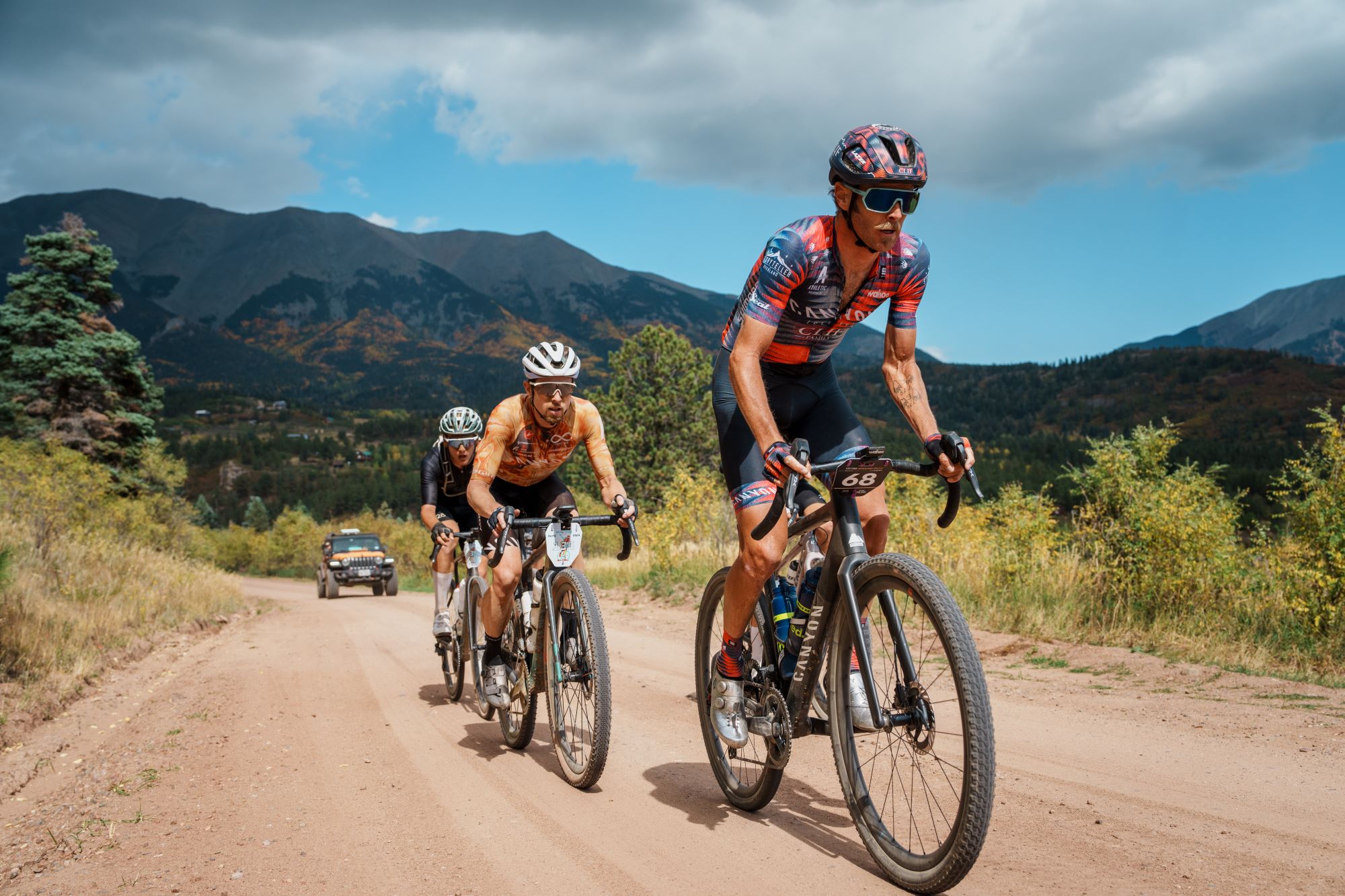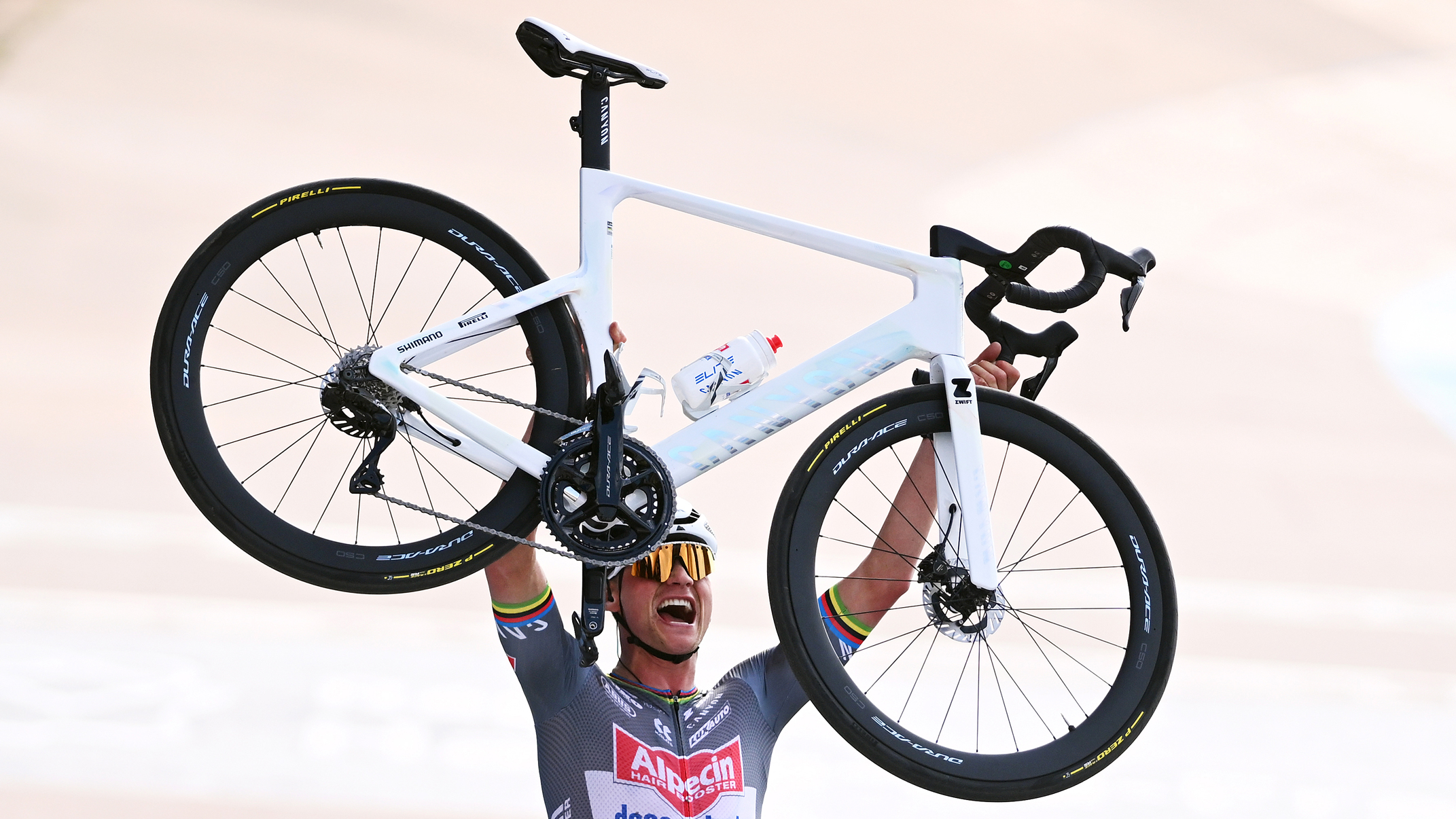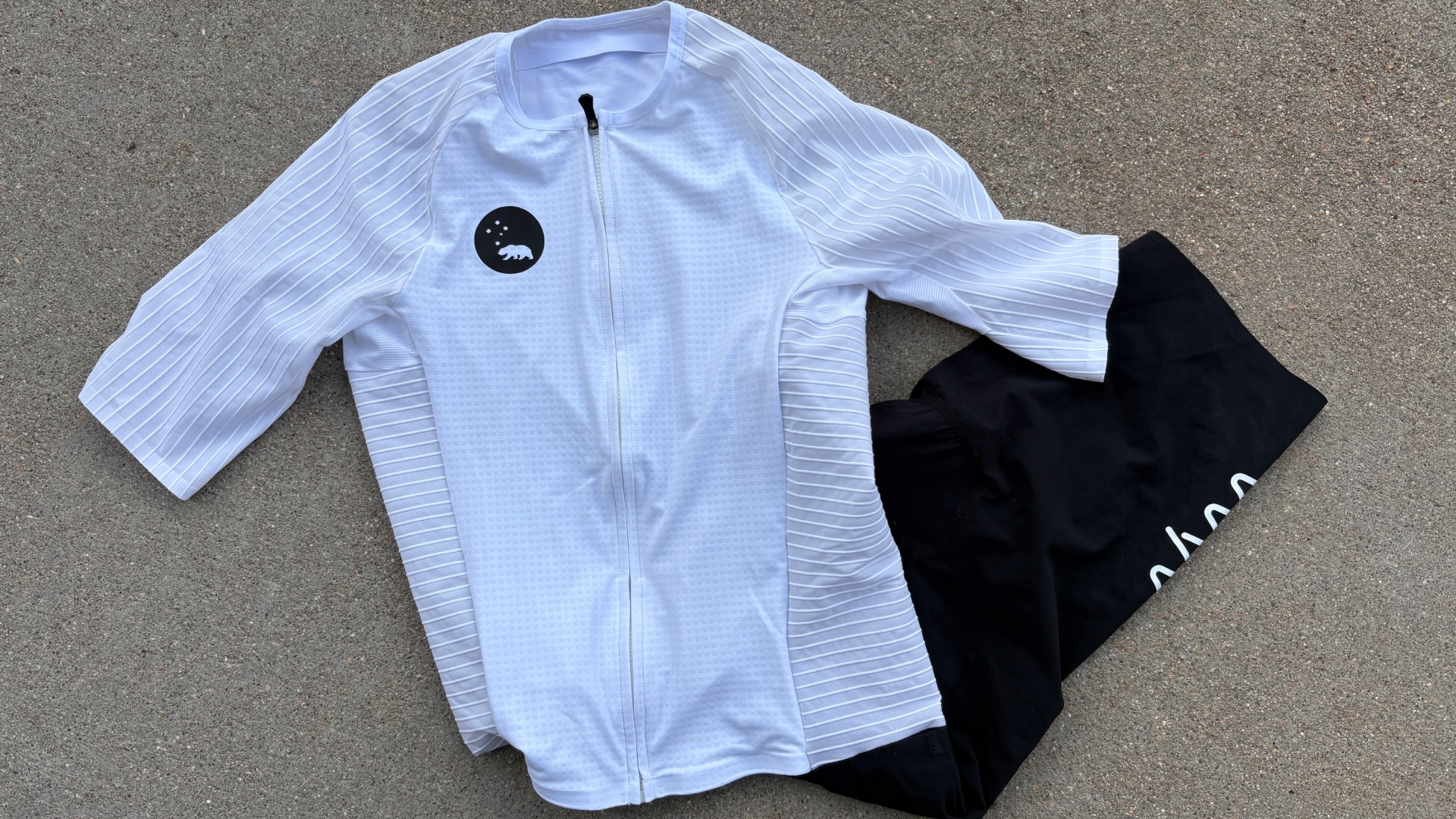Are 50mm tyres the future, and what does it mean for your gravel bike frame?
Gravel tyres have put on some serious width in the past five or six years, and this trend shows no sign of slowing


I'll admit to feeling a little hard done by. All those years crashing around the lanes of south London and Surrey on 23mm tyres pumped up harder than mahogany, when all that time I could have been using 28s, even 32s and more, and enjoying both comfort and (legs willing) speed.
As we have gradually got to grips with the rather counter-intuitive idea that wider tyres don't tend to slow you down, tyres have got bigger, and bigger, and bigger.
It isn't uncommon to find tyres that are 30mm and more specced on a road bike – witness the Canyon Endurace CF, with 30mm tyres, 35mm clearance, or the Specialized Roubaix SL8 with 32mm tyres.
Gravel bikes are a different story altogether. They have gone from 38 and 40mm as a standard to 45mm, and now 50mm (1.97 inches) is becoming more and more popular, with many gravel frames now specced to accept tyres this size and even bigger.
"It's more than a trend now, it's here, it has really taken off and settled in the consciousness of the gravel community," says Panaracer's Jeff Zell. "It's already being taken seriously by the gravel frame manufacturers, both on the small builder side and also on the more major side.
"People that are really well respected, pushed the idea to really change quickly, more so than cycling usually changes its mind on things, whether it be headset sizes, bottom brackets, crank lengths. You know, whatever it is, sometimes it can take decades."
The 50mm Panaracer GravelKing SK, Zell points out, has been in its line-up for around three years, with a 50mm version of its gnarlier X1 due this spring.
Get The Leadout Newsletter
The latest race content, interviews, features, reviews and expert buying guides, direct to your inbox!
From road to cross to mountain
Framebuilder Lee Prescott of Velo Atalier says: "Gravel bikes very much started as essentially road bikes with bigger clearances. They were glorified cross bikes. As time has evolved they've got closer and closer to mountain bikes.
"If you look at the whole bikepacking scene," he adds, "there is almost no distinct line now between bikepacking mountain bikes and bikepacking gravel bikes. A lot of them are using, essentially mountain bikes with either flat bar or drop bar."
There has been a similar progression in mountain biking over the past 30 years. With 1.95in once being a popular size, MTB tyres rarely dip below 2.25in these days. Tom Pidcock, for example, chose 2.4in rubber for his title-winning Olympic MTB race at Paris last year.
The reasons go something like this: if you can have more grip, and more comfort, with little to no increase in rolling resistance, then you should be looking at higher speeds. After all, you can corner and descend more confidently, and you'll feel less battered as the miles tick by.
There is a reason, Prescott says, that gravel tyres are evolving so fast – it comes down to the size of the companies building the frames.
"Gravel, in a lot of respects, is still being led by the niche builders," he says, "and the little niche builders can move and flex much quicker and easier than the big juggernaut companies. The little guys like us [at Velotalier], almost every bike we make is a prototype.
"Unfortunately I'm old enough to remember," Prescott adds, "but it reminds me a lot of the early days of mountain bikes. You know, it was a niche sport in the '80s, and it moved really quickly because it was little. It was dudes in their garages making stuff."
Zell details the evolution of gravel tyre sizes: "We went from 35mm being massive for almost five years, to 38 being where all the cool kids were at one point. And that lasted for a while, because most frames at that time hadn't caught up.
"Then we saw the 40 really taking over – we saw the 40 go to 45 over about five months."
That 40mm rubber remains a popular size, he says, but 45 is becoming ever more popular, beginning to edge the 40 out.
"The 45 is really starting to put the squeeze on 40s for us in the UK," Zell says of Panaracer sales.
This is something that not just tyre manufacturers, but frame builders big and small are well aware of, he says, and they are tweaking their products accordingly.
"The smarter ones are moving more towards 54mm," he says, "for both altruistic and also financial reasons because, especially on carbon frames, it's not cheap to redo carbon frames.
Elite inspiration
For many people, more than 50mm might seem like overkill at this point, but as Zell points out, it's hard to second-guess how you might feel about such matters in a year or two's time.
"People may be like, I'd never use a 54. Well, you were never going to use a 40. You were never going to use a 45, you know. And now you want to use a 50…"
At the sharp end, among the elite at events like Unbound and others, gravel has already made tentative steps towards adopting mountain bike-level tyre widths. As we reported last year, riders such as Payson McElveen were opting for 2.25in tyres, while Lachlan Morton rode a 2.1in front on the way to victory at Unbound.
As Zell says of MTB standards for gravel: "It's already coming, and in some ways it's already here, even though it's not in the public's purview at the moment. You're starting to see the the bikepackers, the adventure cyclists… the events that lot of people look to… they see what's happening with this, and they see what people are riding, and they see the speeds, and they see the comments that are being made."
What Zell is talking about is essentially the Tour de France effect, which has pervaded road cycling pretty much since consumers could afford bikes that looked like the ones that the pros used. It's a well-trodden pattern, with club riders looking to the pros for cues and following their lead. It's the reason many non-racers were riding around on stretched out machines with very narrow tyres and lofty racing gears for so long.
It makes sense that this would exist in gravel as well, especially given that the use of ever-wider tyres is as much a comfort thing, applicable to those in the slow lane, as it is a performance tweak for the likes of Lachlan Morton.
Another factor accelerating the drive towards fatter rubber could be the number of people now entering gravel direct from other sports, rather than from the road scene with all the preconceptions that carries with it.
"We see a lot of mountaineers, for example, and people from ultra sports, getting into gravel," says Prescott, and without that baggage they are more open to trying bikes that might look rather weird and wonderful to the rest of us, he adds.
In any case, it never takes long for the weird and wonderful bike of today to become the cool bike that everyone wants of tomorrow. If it's comfy, grippy, and can win Unbound, I for one am looking forward to trying out 50mm and more.
When it comes to your own gravel frame, the speed of all this development might mean you're going to need to trade it in for something new if you want to get on the 50mm bus.
Unless you have a newish bike (and even if you do), there's a reasonable chance it's optimised for 45mm clearance. Fifties might squeeze in at a push, and it might work OK in the dry as a stop-gap. Be wary of the sticky stuff though. Mud clearance will be seriously reduced and clogging in the chainstays could easily take the paint off the frame, and in the case of carbon-fibre, even wear a hole in the tubing.
There's also the likelihood that frames designed for 45mm tyres and below are soon going to be less saleable on the used market, so one option to consider is whacking some 35s in it and keeping it keeping it as an all-road machine to complement the go-anywhere monster you're about to build up.
After all, you can never have too many bikes, right?

Thank you for reading 20 articles this month* Join now for unlimited access
Enjoy your first month for just £1 / $1 / €1
*Read 5 free articles per month without a subscription

Join now for unlimited access
Try first month for just £1 / $1 / €1
After cutting his teeth on local and national newspapers, James began at Cycling Weekly as a sub-editor in 2000 when the current office was literally all fields.
Eventually becoming chief sub-editor, in 2016 he switched to the job of full-time writer, and covers news, racing and features.
A lifelong cyclist and cycling fan, James's racing days (and most of his fitness) are now behind him. But he still rides regularly, both on the road and on the gravelly stuff.
You must confirm your public display name before commenting
Please logout and then login again, you will then be prompted to enter your display name.
-
 Save £42 on the same tyres that Mathieu Van de Poel won Paris-Roubaix on, this Easter weekend
Save £42 on the same tyres that Mathieu Van de Poel won Paris-Roubaix on, this Easter weekendDeals Its rare that Pirelli P-Zero Race TLR RS can be found on sale, and certainly not with a whopping 25% discount, grab a pair this weekend before they go...
By Matt Ischt-Barnard
-
 "Like a second skin” - the WYN Republic CdA triathlon suit reviewed
"Like a second skin” - the WYN Republic CdA triathlon suit reviewed$700 is a substantial investment in a Tri Suit, and it is, but you’ll definitely feel fast in it
By Kristin Jenny